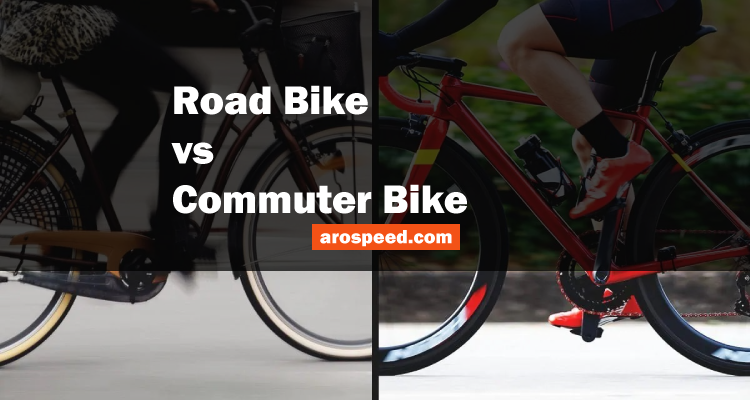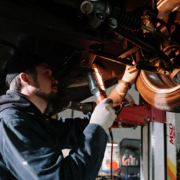Cycling has become more than just a means of transportation—it’s a lifestyle choice with an array of specialized bikes catering to different needs. Among these, road bikes and commuter bikes stand out for their distinct purposes and features. Understanding the differences between these two types of bicycles is crucial for selecting the right one based on your intended usage and preferences.
| Feature | Road Bike | Commuter Bike |
| Purpose | Geared for speed and performance on smooth roads. | Designed for practicality and comfort in daily commuting. |
| Riding Position | Forward-leaning, aerodynamic posture. | Upright riding position for comfort and visibility. |
| Terrain Suitability | Best on well-maintained roads and cycling paths. | Versatile for various surfaces, including city streets. |
| Tire Type | Thin tires with minimal tread for reduced resistance. | Wider tires with more tread for stability and traction. |
| Handlebars | Drop handlebars for multiple hand positions. | Upright handlebars for a relaxed riding position. |
| Gear Ratios | High gear ratios for speed and efficiency. | Lower gear ratios for ease of pedaling and stop-and-go. |
| Saddle Type | Firm and narrow, optimized for short rides. | Comfortable, wider saddle suitable for longer commutes. |
| Frame Material | Lightweight materials like carbon fiber or aluminum. | Sturdy materials like steel or aluminum for durability. |
| Storage Options | Limited attachment points for racks and panniers. | Equipped with mounts for racks, fenders, and accessories. |
| Visibility/Safety | Emphasis on speed may require additional safety gear. | Built-in lights, fenders, and reflectors for visibility. |
| Maintenance | Regular maintenance due to high-performance components. | Requires less maintenance due to durable construction. |
| Cost | Often higher cost due to advanced materials and design. | Generally, more budget-friendly, catering to a wider audience. |
| Cultural Aspect | Emphasis on competitive cycling events and group rides. | Associated with sustainable transportation and practicality. |
Table of Contents
Defining Road Bike Vs Commuter Bikes
Road Bikes
Road bikes like Yamaha are designed for speed, efficiency, and performance on smooth surfaces like paved roads. These bikes typically feature:
Lightweight Frames: Constructed from materials like carbon fiber or aluminum to minimize weight and top speed.
Narrow Tires: Thin tires with minimal tread patterns for reduced rolling resistance, enhancing speed on roads.
Drop Handlebars: Offering multiple hand positions for aerodynamics and control while riding in a low, forward-leaning position.
High Gear Ratios: Equipped with a wide range of gears optimized for speed, allowing riders to pedal faster with less effort.
Firm Saddles: Designed for shorter rides with a focus on efficiency rather than comfort.
Commuter Bikes
Commuter bikes, on the other hand, are tailored for everyday urban commuting and practicality. They typically include:
Sturdy Frames: Constructed for durability and versatility using materials like steel or aluminum.
Wider Tires: Tires with more tread for stability and traction on varied surfaces like roads, pavements, and even light trails.
Upright Handlebars: Providing a more relaxed riding position for better visibility and comfort during longer rides.
Lower Gear Ratios: Geared towards ease of pedaling rather than top speeds, making it suitable for stop-and-go traffic.
Comfortable Saddles: Designed to provide comfort during longer rides, accommodating daily commuting needs.
Key Differences Between Road Bikes and Commuter Bikes
Purpose
Road Bikes: Primarily designed for speed and performance, ideal for cycling enthusiasts, racers, or those focused on fitness. It is the fastest in the world.
Commuter Bikes: Geared towards practicality and comfort, suitable for daily commuting, errands, and versatile riding experiences.
Riding Position
Road Bikes: Promote a more aerodynamic and aggressive riding position, placing the rider in a forward-leaning posture.
Commuter Bikes: Offer an upright riding position for better visibility and comfort during longer rides and frequent stops.
Terrain Suitability
Road Bikes: Best suited for smooth, paved surfaces like roads and cycling paths, performing exceptionally well on these terrains.
Commuter Bikes: Versatile enough to handle various surfaces, including roads, pavements, gravel paths, and light trails.
Gear Ratios
Road Bikes: Equipped with higher gear ratios, allowing riders to achieve higher speeds with less effort.
Commuter Bikes: Feature lower gear ratios for easier pedaling, ideal for stop-and-go traffic and navigating city streets.
Choosing the Right Bike for You
Considerations for Road Bikes
- If you prioritize speed, performance, and longer rides on well-maintained roads, a road bike would be an optimal choice.
- Ideal for cycling enthusiasts, those interested in group rides, competitive racing, or fitness-focused cycling regimes.
Considerations for Commuter Bikes
- For daily commuting, running errands, and rides involving varied surfaces, a commuter bike offers practicality and comfort.
- Suitable for individuals seeking a more relaxed riding experience, better visibility in traffic, and versatility in their cycling routes.
Factors to Consider When Choosing Between Road Bikes vs Commuter Bikes
Riding Distance
Road Bikes: Including Honda bikes, these are best suited for longer rides and extended periods in the saddle due to their aerodynamic design and efficiency.
Commuter Bikes: Ideal for shorter to moderate distances, providing comfort and practicality for daily commuting and errands.
Terrain Variety
Road Novara Bikes: Limited to well-maintained roads and cycling paths; not suitable for rough or uneven surfaces.
Commuter Bikes: Versatile enough to handle a variety of terrains, making them suitable for city streets, pavements, and even light trails.
Storage and Accessories
Road Bikes: Often lack attachment points for racks and panniers, limiting storage options for carrying belongings.
Commuter Bikes: Designed with practicality in mind, often equipped with mounts for racks and fenders, allowing for easy customization and storage solutions.
Visibility and Safety
Road Bikes: Focus on speed and aerodynamics may compromise visibility in traffic; additional safety measures such as lights and reflective gear may be necessary.
Commuter Bikes: Upright riding position provides better visibility, and many models come with built-in lights, fenders, and reflectors to enhance safety during daily commuting.
Budget Considerations
Road Bikes: Typically come with a higher price tag due to advanced materials, components, and aerodynamic features.
Commuter Bikes: Generally, more budget-friendly, catering to a wider audience with a focus on practicality rather than high-end performance.
Customization Options for Road Bikes and Commuter Bikes
Road Bikes
- Customizable components such as handlebars, stems, and saddles allow riders to fine-tune their position for optimal performance.
- Upgrading to lighter wheels, aerodynamic frames, and high-end drivetrain components can enhance speed and overall performance.
Commuter Bikes
- Easy customization options for adding racks, panniers, and fenders to accommodate daily commuting needs.
- Comfort-focused upgrades such as wider saddles, ergonomic grips, and adjustable stems can enhance the overall riding experience.
Maintenance Considerations
Road Bikes
- Require regular maintenance due to their lightweight and high-performance components.
- Thin tires may be more prone to punctures, requiring vigilant tire checks and replacements.
Commuter Bikes
- Sturdy frames and components contribute to durability, reducing the frequency of maintenance.
- Wider tires are more resistant to punctures, offering a more reliable and hassle-free commuting experience.
Environmental Impact
Road Bikes
- Efficient design contributes to lower energy consumption during rides, making them an eco-friendly option for those concerned about environmental impact.
- Lightweight materials in road bike construction may have a higher initial environmental cost in production.
Commuter Bikes
- Practicality and versatility make commuter bikes a sustainable choice for daily transportation needs.
- Durable construction and a focus on functionality contribute to a longer lifespan, reducing the need for frequent replacements.
Choosing the Right Bike for Your Lifestyle
Deciding between a road bike and a commuter bike ultimately boils down to your individual preferences, lifestyle, and the type of cycling you plan to undertake. Consider the following factors to guide your decision:
Primary Use
- If your primary goal is fitness, group rides, or competitive cycling, a road bike is likely the better choice.
- For daily commuting, running errands, and a more versatile riding experience, a commuter bike aligns with your needs.
Comfort vs. Speed
- If you prioritize comfort and a relaxed riding position, especially during daily commutes, a commuter bike offers a better fit.
- If you are willing to sacrifice some comfort for speed and aerodynamics during longer rides, a road bike is the way to go.
Budgetary Constraints
- Road bikes often come with a higher price tag due to their specialized design and components. Consider your budget and whether the additional cost aligns with your priorities.
- Commuter bikes provide an excellent balance of performance and affordability, making them a cost-effective option for many cyclists.
Storage and Practicality
- Evaluate your need for storage options and accessories. Commuter bikes, with their built-in attachment points, are more practical for carrying belongings.
- If you plan on extensive customization for performance gains, a road bike may better suit your needs.
Maintenance and Long-Term Considerations
Road Bikes
- The lightweight and high-performance nature of road bikes necessitate regular maintenance checks. Components like the drivetrain, brakes, and gears may require adjustments more frequently.
- Professional tune-ups are advisable for road bikes, especially before significant rides or competitions, ensuring optimal performance.
Commuter Bikes
- Commuter bikes, designed for durability and daily use, typically require less maintenance. Sturdy frames and components contribute to their longevity.
- Routine checks, such as ensuring tire pressure and lubricating the chain, are usually sufficient for maintaining a commuter bike in good condition.
Cultural and Lifestyle Considerations
Road Bikes
- Road biking has a vibrant culture, with enthusiasts often participating in group rides, events, and races.
- If you enjoy the camaraderie of a cycling community, road biking provides ample opportunities to connect with like-minded individuals.
Commuter Bikes
- Commuting by bike is an increasingly popular lifestyle choice, aligning with the growing interest in sustainable transportation.
- Commuter bikes are well-suited for those who appreciate a more laid-back approach to cycling and view it as a practical means of daily transportation.
Technology Integration
Road Bikes
- Road bikes may integrate advanced technologies such as electronic shifting systems, aerodynamic design features, and lightweight materials like carbon fiber.
- These technological advancements contribute to enhanced performance, making road bikes a top choice for those who seek the latest innovations in cycling.
Commuter Bikes
- While commuter bikes may not feature cutting-edge technologies, they often come with practical additions like built-in lights, fenders, and racks.
- Some commuter bikes may also accommodate modern accessories such as GPS devices, smartphone mounts, and USB charging ports.
Social and Environmental Impact
Road Bikes
- Road biking, with its emphasis on speed and efficiency, can be seen as an eco-friendly mode of transportation, promoting a lower carbon footprint.
- However, the environmental impact of manufacturing lightweight materials for road bikes should also be considered.
Commuter Bikes
- Commuter bikes align with the growing awareness of sustainable and eco-friendly transportation choices.
- Choosing a commuter bike for daily transportation contributes to reducing reliance on cars and minimizing environmental impact.
Health and Fitness Considerations
Road Bikes
- The aerodynamic riding position and higher intensity of road biking make it an excellent choice for cardiovascular fitness and muscle toning.
- Road biking can be a challenging workout, suitable for those who enjoy pushing their physical limits.
Commuter Bikes
- Commuter bikes offer a more relaxed riding experience, making them accessible to individuals of various fitness levels.
- The comfortable upright position is gentler on the joints, appealing to those seeking a more moderate form of exercise.
Seasonal Adaptability
Road Bikes
- Road bikes are typically optimized for fair weather conditions and well-maintained roads.
- While some road bikes can handle light rain, they may not be the best choice for adverse weather or winter riding conditions.
Commuter Bikes
- Commuter bikes, with their versatility, are better suited for year-round use. They can handle various weather conditions, including rain and snow.
- Commuter bikes often come with fenders to protect the rider from mud and water, enhancing their suitability for diverse climates.
Resale Value and Long-Term Investment
Road Bikes
- High-end road bikes may hold their value well, especially if they are maintained in excellent condition.
- Upgrades and improvements can enhance the resale value of a road bike, making it a potentially sound long-term investment.
Commuter Bikes
- Commuter bikes, while generally more affordable, may not have as high a resale value as road bikes.
- However, their durability and practicality can make them a cost-effective choice over the long term, especially for daily commuting needs.
Local Regulations and Infrastructure
Road Bikes
- Some areas have dedicated cycling lanes and road infrastructure that cater to road biking enthusiasts.
- Familiarize yourself with local regulations and cycling-friendly routes to make the most of your road biking experience.
Commuter Bikes
- Commuter bikes are well-suited for urban environments with cycling infrastructure and may offer a smoother experience in areas with heavy traffic.
Cultural and Lifestyle Considerations
Road Bikes
- Road biking has a rich culture that extends beyond the act of cycling itself. Events like Tour de France and local cycling clubs contribute to a vibrant community.
- For those who enjoy the competitive and social aspects of cycling, road biking provides a rich tapestry of experiences.
Commuter Bikes
- Commuter biking aligns with a practical, sustainable lifestyle. It is a choice that reflects a commitment to reducing environmental impact and promoting healthier transportation alternatives.
- Commuter biking communities often focus on shared experiences, such as finding the best routes and addressing urban cycling challenges.
Conclusion
In the debate of road bike vs commuter bike, the choice ultimately depends on your specific needs and preferences. Whether it’s the need for speed and performance on smooth roads or the practicality and comfort for daily commuting, understanding the nuances between these two types of bikes is essential.
Evaluate your riding habits, terrain preferences, and intended use to make an informed decision. Both road bikes and commuter bikes offer unique advantages, ensuring an enjoyable cycling experience tailored to your lifestyle.
In the end, the perfect bike is the one that fits your riding style and serves your purposes best. Choose wisely, and let the wheels of your chosen bike pave the way for countless fulfilling rides ahead.








Comments